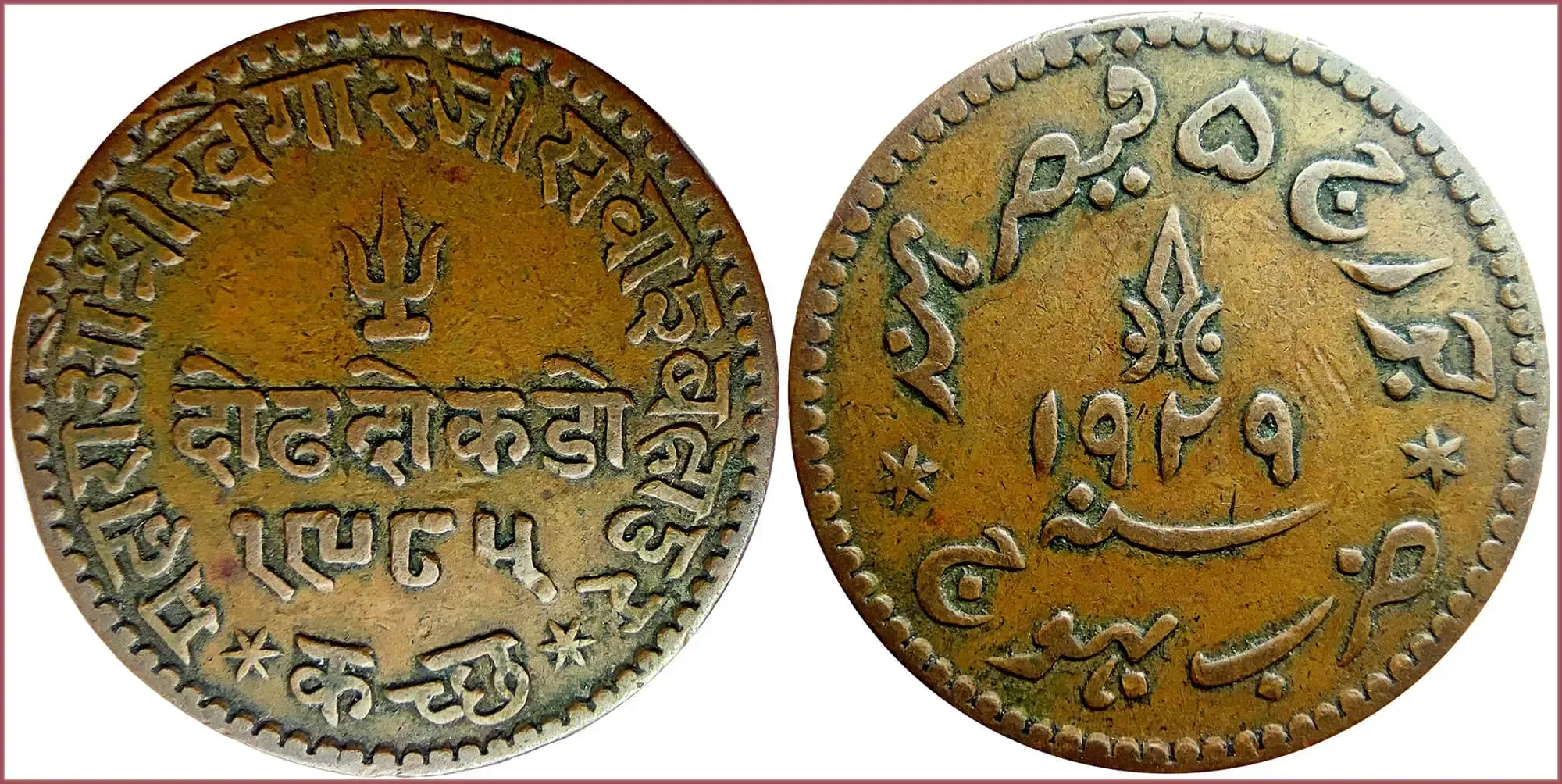DOKDO: COIN OF KUTCH (INDIA)
1,5 dokdo, 1929: Princely State of Kutch (India)
Kutch State or Cutch State (in numismatic catalogs the issuer is often indicated as Princely State of Kutch) — a kingdom in the Kutch region (1147-1819) and a princely state under British rule (1819-1947). Its territories covered the present day Kutch region of Gujarat (Republic of India).
Rulers: Khengarji III (Maharajadhiraj Mirza Maharao Sir Khengarji III Sawai Bahadur) — the longest ruling king of the Princely State of Kutch (1875-1942) // George V — King of the United Kingdom and the British Dominions, and Emperor of India.
Date on coin: VS 1985 (VS: "Vikram Samvat" — Hindu calendar used in the Indian subcontinent; in India it is used in several states) = 1929 (Gregorian calendar).
The legend on the reverse and obverse of the coin is written in two languages: Devanagari script (Gujarati) and Perso-Arabic script (Urdu), respectively.
महाराओ श्री खेंगारजी सवाइ बहादुर. कच्छ: Maharao Shri Khengarji Sawai Bahadur. Kutch.
दोढ दोकडो: "dod dokdo" — one and a half dokda.
१९८५: 1985.
Trishula — trident, a divine symbol, commonly used as one of the principal symbols in Hinduism.
جورج قیصر ہند: George V, Emperor of India.
ضرب بہوج: Struck at Bhuj /capital of the Princely State of Kutch during 1549-1947/.
١٩٢٩: 1929.
Katar — type of push dagger (one of the symbols of Kutch State).
- Copper: 23 mm - 8.25 g
- Reference price: 7.2$
COIN DOKDO — WHERE & WHEN (coins catalog: by names & emitents)
- PRINCELY STATE OF KUTCH, India (17th-20th centuries): dokdo = 2 trambiyo = 1/24 kori
- PRINCELY STATE OF BHAVNAGAR, India (18th century): dokdo = 2 trambiyo
- PRINCELY STATE OF JUNAGADH, India (19th-20th centuries): dokdo = 2 trambiyo = 1/24 kori
- PRINCELY STATE OF NAWANAGAR, India (16th-19th centuries): dokdo = 2 trambiyo = 1/24 kori
- PRINCELY STATE OF PORBANDAR, India (19th century): dokdo = 1/8 kori
DOKDO as coin name.
Dokdo (plural: dokda) — copper exchange coin of some Indian kingdoms (Princely states), which was used by them for several hundred years, until the middle of the 20th century.
The geography of dokdo circulation is almost entirely limited to the state of Gujarat, which is in the west of modern India. In the collections of numismatists, this coin is most often found in the following princely states (now almost all of them are districts of the aforementioned state): Kutch, Junagadh, Bhavnagar, Porbandar, Nawanagar...
When the very first Indian coins of this denomination appeared, it was not possible to find information (there is data on their emission during at least the 17th-20th centuries). By the middle of the 20th century, the coin’s denomination ceased to exist.
Dokdo was equated, as a rule, to 2 trambiyo or 1/24 kori.
The etymology of the name of the dokdo coin is not known for sure. However, one of the numismatic dictionaries gives the following version: derived from the term "દોક્ડો" in the Gujarati language — ancient weight (most often for measuring the weight of pearls).
It is interesting that in the above-mentioned Indian princely states, mainly endemic (specific only to this region) names of coins were used in monetary circulation: dokdo, trambiyo, kori, dhinglo, dhabu, payalo...

